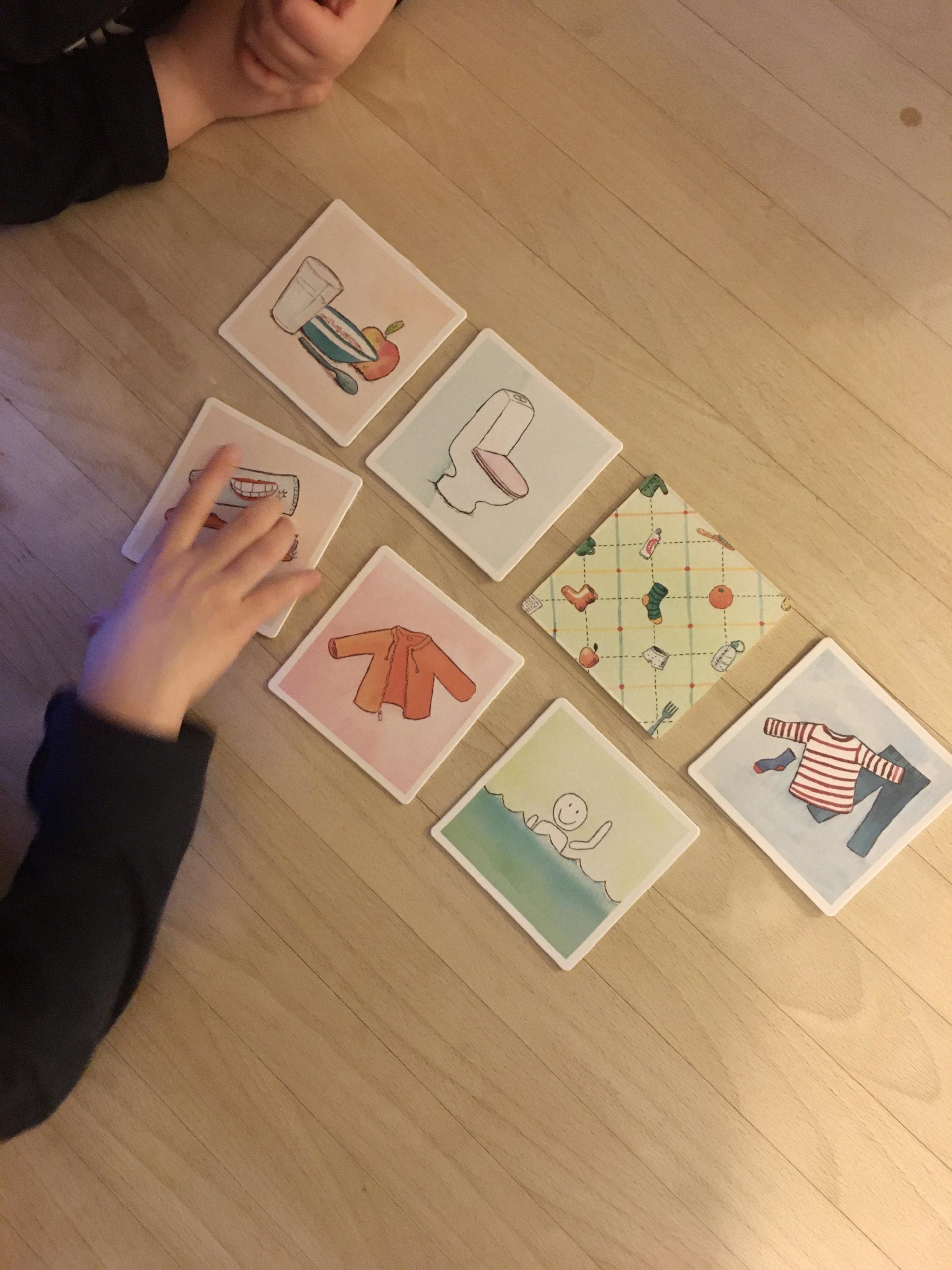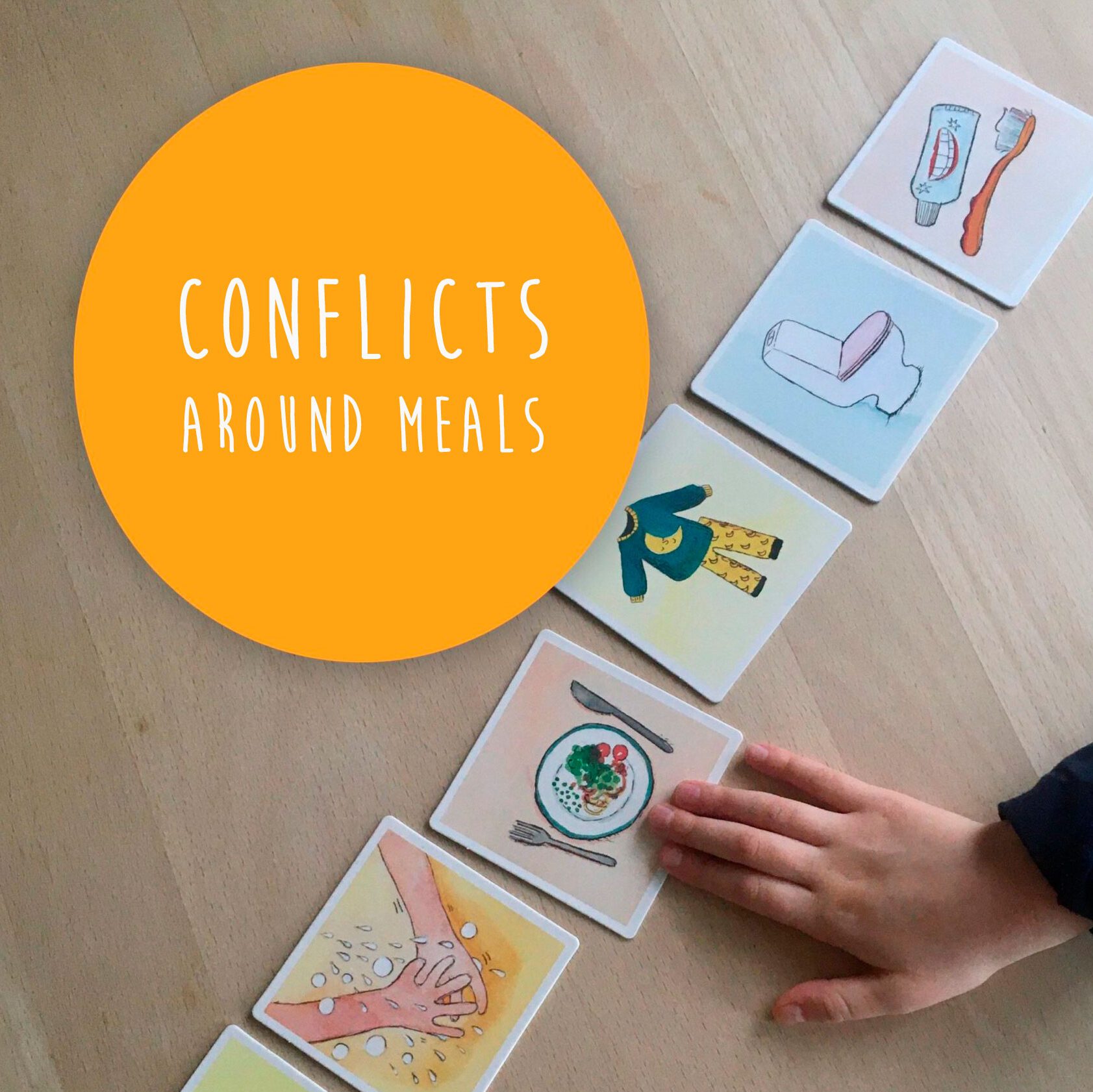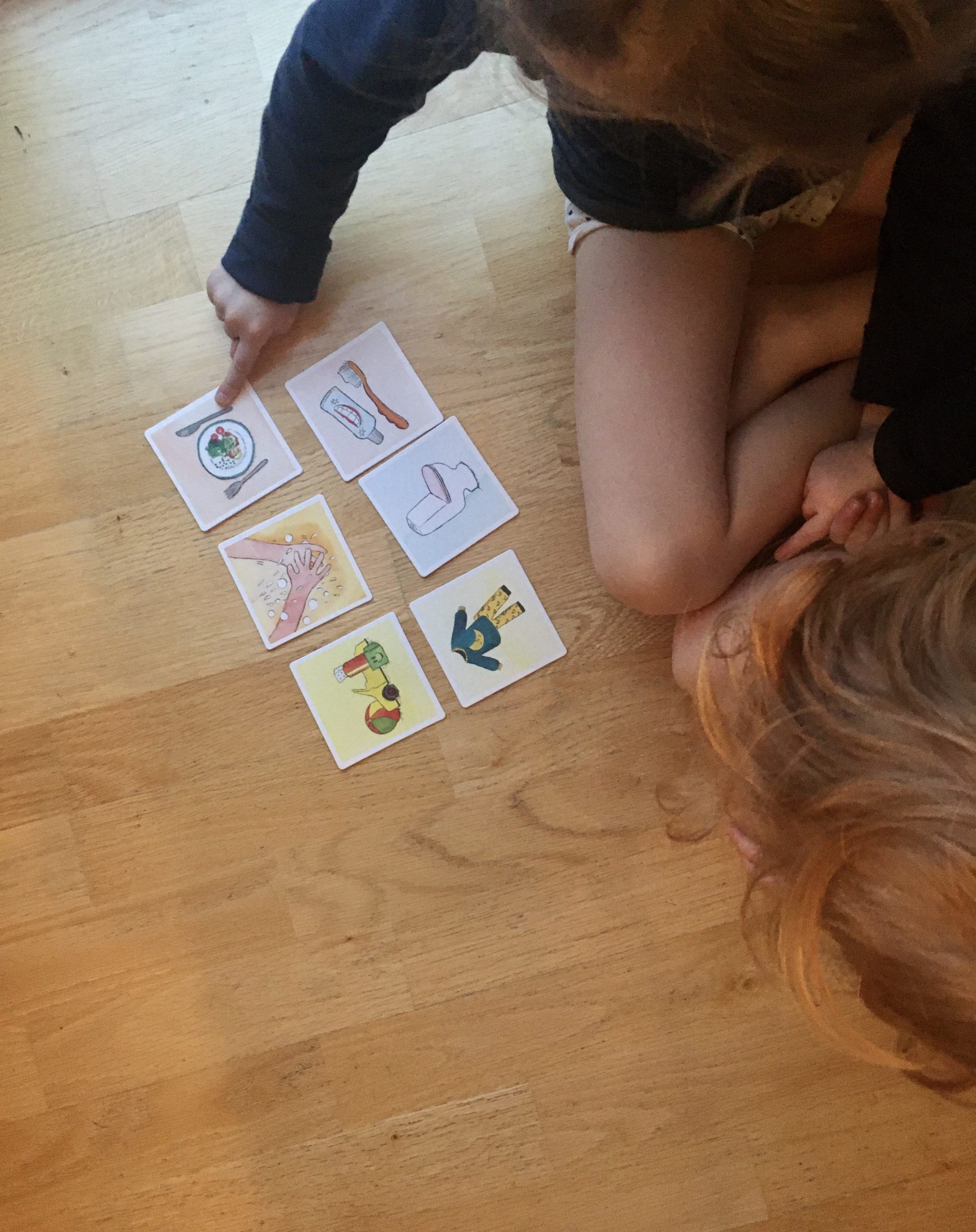“Dinner’s ready, girls” is a phrase I tend to associate with a little nervousness.
I never quite know what reaction will be. Some days my two and four year-old daughters come running happily, sit down at the table, and eat with the utmost pleasure.
Other days, my eldest gladly comes to the table, but a moment later, she’ll be lying on the floor in floods of tears because I’ve served something other than she had expected and hoped for. And then there are all the days on which my youngest breaks down completely as soon as I tell her it’s time to eat.
Mealtime conflicts are (almost) never about food, but about the transition
Both of my girls are very fond of food and are both great kids who are willing to try new things, and once everyone has settled down and are happy and comfortable again, we (almost) always have pleasant mealtimes. Their reactions are therefore not about the food or eating in itself.
Particularly for my youngest, it’s hard to switch from one activity to another. At the same time, my eldest daughter has a great need to know in detail what’s about to happen – it’s not enough to know that we’re going to eat soon, but also whatwe’re going to eat.
For a completely different reason, we bought the pictograms from CIHA a few weeks ago. We had been thinking about using pictograms as a tool to make the day’s plans and routines more predictable and manageable for a long time. Our children clearly feel most content when they know the day’s plans and know what the next step is.
“I want to brush my teeth now”
In practice, we use the pictograms like this: I find the relevant pictures in the evening and place them ready in a pile on the dining table.
In the morning we look at them together and place them in a row. The pictograms help to support our conversation about what will happen that day and what we need to do before we are ready to go out the door.

We find that this chat combined with the visual element helps the children to understand and accept that we won’t be going to the swimming pool first thing, but that there are a number of practical things we have to do first.
Joint decision-making and responsibility
The children themselves help to decide the order. They can see that they both need to have their teeth brushed and getdressed, but they decide themselves what to do first. The feeling of decision-making and joint responsibility makes the process easier for them – and it strengthens children’s self-esteem to have an influence in their own lives.
As the children “complete” the various tasks, they turn the pictures over themselves. They get quite into that! We even notice that they are eager to move forward with their tasks. Before, it was always difficult for us to get the children to accept the grown-up’s idea that you have to go to the toilet, brush your teeth and get dressed before going out the door in the morning.
Of course, that doesn’t mean to say that everything is always easy. But the pictograms are without a doubt a good support system for us and make the morning and evening routines easier for the whole family.
We also quickly realised that the pictograms are also a great help in making sure dinnertime runs smoothly.
Building bridges with visual communication
In the afternoon I bring out the relevant pictures again and talk to the children about what we’ll be doing.
Children don’t have a sense of time in the same way as we grown-ups do, but the pictograms help them to gain an overview of when mealtime is in relation to other activities. We regularly go back and look at the cards and talk about the fact that we will soon have to stop playing or watching television in order to eat dinner.
It’s important to build a bridge between the children’s world and the adult world to create a safe and loving environment. This is essential to make mealtimes a positive experience.
Mealtimes are about much more than food. A child who is upset or stressed will rarely feel like eating. We can build bridges in many ways, e.g. by participating in their games leading up to mealtime or by involving them in cooking and table setting so that they have a say and a sense of ownership.
And we use pictograms as a tool to better communicate on the child’s level.
___________________________________________________
The post was written by Signe Larsson, clinical dietitian and cand. mag. in health promotion, mother of two and currently stay-at-home mother to her youngest.
Runs the Instagram profile minimaver, where you will find:
Dietary advice for children
Children in the kitchen
Happy mealtimes



Leave a Reply